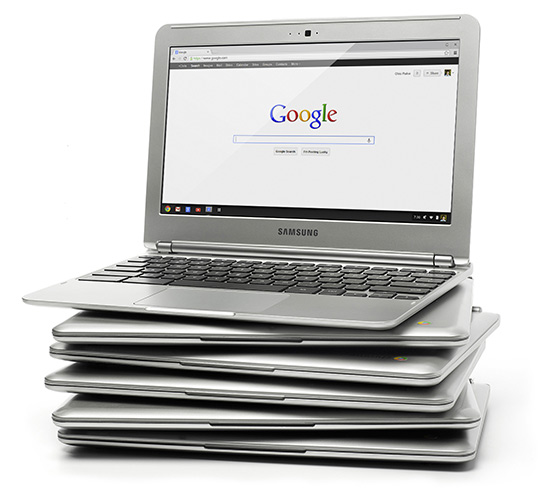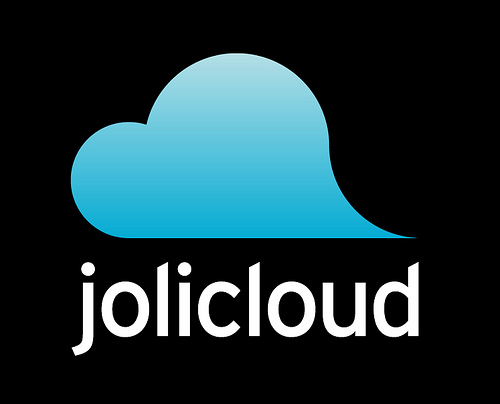 For a while now I’ve been really keen to get my hands on one of the new Chromebooks but they have been as scarce as the proverbial rocking horse poop. I played with the original CR-48 units at the 2011 Sydney Google Teacher Academy, and although I thought they were a brilliant concept, troubles with the wifi at the time (at Google HQ of all places!) had me going back to my MacBook Pro sooner than I planned. The basic concept of a Chromebook is a computer where the operating system is basically just a browser (although I don’t think it’s really fair to refer to Chrome as “just a browser”.)
For a while now I’ve been really keen to get my hands on one of the new Chromebooks but they have been as scarce as the proverbial rocking horse poop. I played with the original CR-48 units at the 2011 Sydney Google Teacher Academy, and although I thought they were a brilliant concept, troubles with the wifi at the time (at Google HQ of all places!) had me going back to my MacBook Pro sooner than I planned. The basic concept of a Chromebook is a computer where the operating system is basically just a browser (although I don’t think it’s really fair to refer to Chrome as “just a browser”.)
Still, by minimising the operating system to little more than a support system for the web browser, it really enables the web to emerge as the platform. With most of the data stored away from the machine – in the cloud – it means that users don’t have to worry about locally stored data. With the “software” on the machine really just being web services on cloud-based servers accessed via the browser, it means that your “software” is always up to date and always the latest version. If you lose the Chromebook or it gets damaged, you lose no data, since there was no data on it to begin with. Just grab another Chromebook, log in with the same Google account and you’re back to exactly where you were.
For schools in particular, it’s a brilliant concept. No software to install and maintain, no user data to store locally, nothing to back up, light and portable, easy to share… just log in and use it.
So for all of these reasons and others (Hey, I just like gadgets!) I was really keen to get my hands on one of the recently released Samsung units. The reviews have been very positive, although dealing with the lack of supply has been pretty frustrating. Lots of people want to buy them, but they have been really hard to get in the US and near impossible everywhere else.
In the leadup to the Sydney Google Summit I was hoping to get hold of one but it didn’t happen. I tried to buy one on Amazon but they refused to ship to Australia. I probably could have bought one on ebay, but for an arm and a leg. Fortunately, while at the Summit I had a chat with Suan Yeo, the head of education for Google in Asia Pacific and he mentioned that he might be able to organise me a loaner.
Well, long story short, I got an email yesterday letting me know that if I wanted to swing by the Sydney Google offices there was a shiny toy made of Chrome for me to play with for a month. Woohoo! I dropped by after work and picked it up, and I’m now writing this blogpost on it.
Here’s my plan. For the next 30 days I plan to use ONLY the Chromebook for my own personal computing use, just to see how feasible it really is to live entirely in the cloud. Of course, there are still things I need to do for my job at school that will require access to network drives and printers and so on, so I will have to keep using my Windows machine there. But I will have the Chromebook on my desk during the day and I intend to use it exclusively as my personal machine for the next month. I’ll blog about it here and let you know how it goes, what works for me, what doesn’t and try to give you an insight into what it’s like to live exclusively in nothing but a browser.
First impressions…
I really like it. I love the size and weight for portability, although the smaller screen size is certainly making my eyes work harder than the larger 15 inch screen on my MacBook Pro or my iMac. But it’s certainly no worse than the 11 inch MacBook Air I have been using as my portable machine. The general build quality feels quite adequate… a little plasticky compared to an aluminium bodied Macbook, but then, so do most other computers. It’s certainly comparable to similar machines, and amazing when you consider it sells for about $250.
I’ve been pleasantly surprised by some of the additional functionality that I didn’t expect. Despite not having a “file system” as such, it does have a desktop, a downloads folder, and it can read and write USB and SD card drives. The access to Google Drive is pretty seamless, as you’d expect. I don’t recall what the earlier Chromebooks did for storage prior to Drive, but having Drive certainly makes them quite usable. The keyboard is full size but has extra buttons that are specific to the Chromebook (and the keys are in lower case, which looks really odd at first.) There are lots of keyboard shortcuts that I want to learn to make it even more functional to use, and they can be accessed by pressing ctrl-alt-?.
Signing into the machine with my Google account immediately brought all my apps, themes and extensions across from my other machine, so within minutes I was working away as though I’d owned the machine forever. Very cool.
Battery life has been amazing. I took it off charge this morning, used it at work all morning, took notes in a meeting, showed it to quite a few people, spent a couple of hours browsing the web, have just been writing this post and it’s now nearly 4pm and it’s still going strong. Even with the screen brightness turned way up, which is the way I like it, I think I would easily get a full days use from it.
The trackpad is quite good, and it has the same two-finger scroll and two-finger secondary click that I’m used to from the MacBook. I don’t much like trackpads at the best of times, and would always prefer to plug in a mouse (which I haven’t done yet) but the trackpad is about as good as it should be.
So, it’s looking good so far. If you’re interested in following my month with a Chromebook check back here again over the next few weeks and I’ll let you know how it’s going.

 I remember back in the mid 90s I started to hear more and more about this upstart operating system for computers called Linux. It was an alternative to Windows and Mac, and was based on an open source project started in 1991 by a student in Helsinki named
I remember back in the mid 90s I started to hear more and more about this upstart operating system for computers called Linux. It was an alternative to Windows and Mac, and was based on an open source project started in 1991 by a student in Helsinki named  But back to Linux for a moment. Maybe it’s old news to some people, but I’ve just lately discovered and have become quite impressed with a Linux distribution called
But back to Linux for a moment. Maybe it’s old news to some people, but I’ve just lately discovered and have become quite impressed with a Linux distribution called